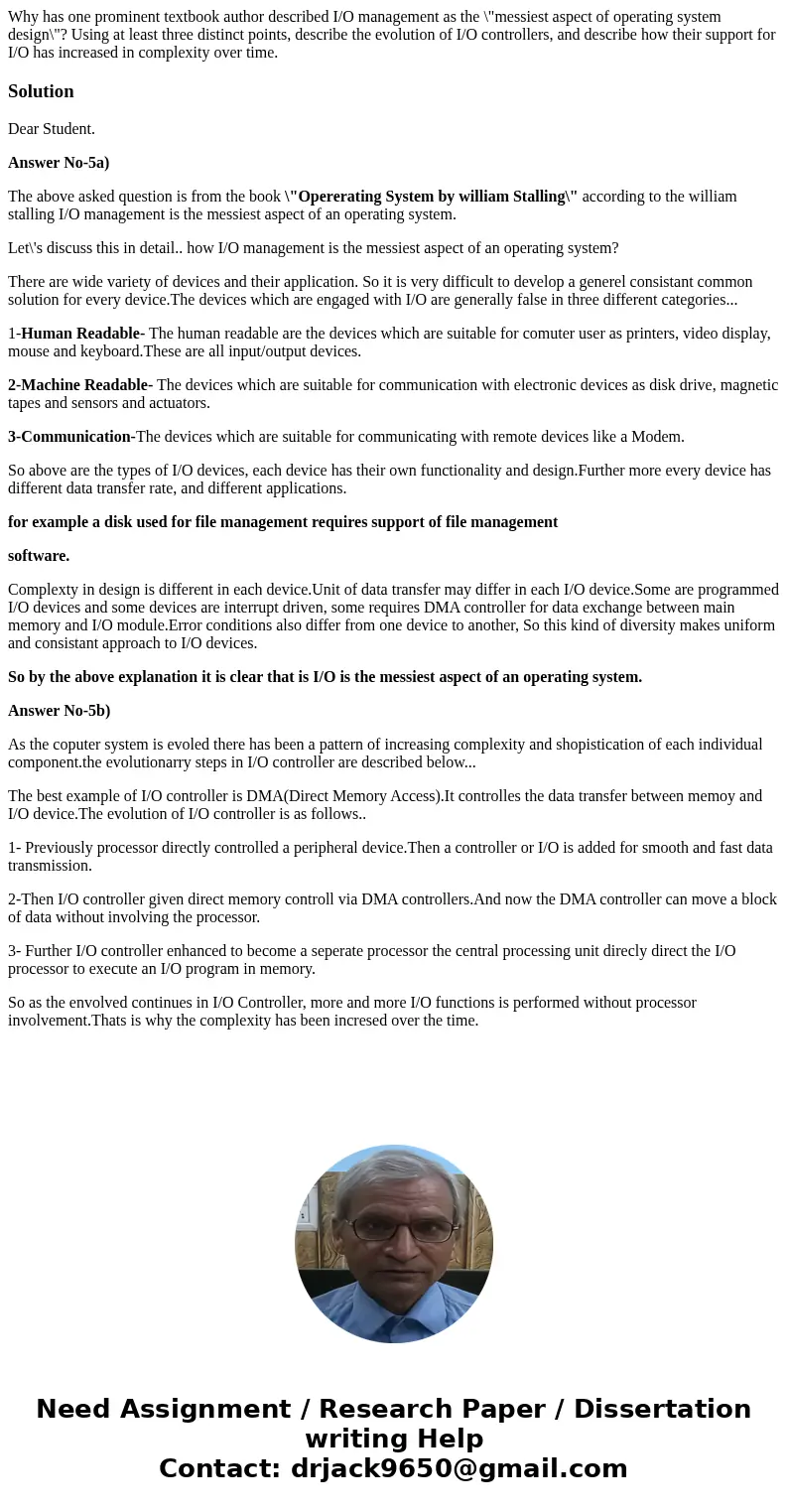Why has one prominent textbook author described IO managemen
Solution
Dear Student.
Answer No-5a)
The above asked question is from the book \"Opererating System by william Stalling\" according to the william stalling I/O management is the messiest aspect of an operating system.
Let\'s discuss this in detail.. how I/O management is the messiest aspect of an operating system?
There are wide variety of devices and their application. So it is very difficult to develop a generel consistant common solution for every device.The devices which are engaged with I/O are generally false in three different categories...
1-Human Readable- The human readable are the devices which are suitable for comuter user as printers, video display, mouse and keyboard.These are all input/output devices.
2-Machine Readable- The devices which are suitable for communication with electronic devices as disk drive, magnetic tapes and sensors and actuators.
3-Communication-The devices which are suitable for communicating with remote devices like a Modem.
So above are the types of I/O devices, each device has their own functionality and design.Further more every device has different data transfer rate, and different applications.
for example a disk used for file management requires support of file management
software.
Complexty in design is different in each device.Unit of data transfer may differ in each I/O device.Some are programmed I/O devices and some devices are interrupt driven, some requires DMA controller for data exchange between main memory and I/O module.Error conditions also differ from one device to another, So this kind of diversity makes uniform and consistant approach to I/O devices.
So by the above explanation it is clear that is I/O is the messiest aspect of an operating system.
Answer No-5b)
As the coputer system is evoled there has been a pattern of increasing complexity and shopistication of each individual component.the evolutionarry steps in I/O controller are described below...
The best example of I/O controller is DMA(Direct Memory Access).It controlles the data transfer between memoy and I/O device.The evolution of I/O controller is as follows..
1- Previously processor directly controlled a peripheral device.Then a controller or I/O is added for smooth and fast data transmission.
2-Then I/O controller given direct memory controll via DMA controllers.And now the DMA controller can move a block of data without involving the processor.
3- Further I/O controller enhanced to become a seperate processor the central processing unit direcly direct the I/O processor to execute an I/O program in memory.
So as the envolved continues in I/O Controller, more and more I/O functions is performed without processor involvement.Thats is why the complexity has been incresed over the time.

 Homework Sourse
Homework Sourse